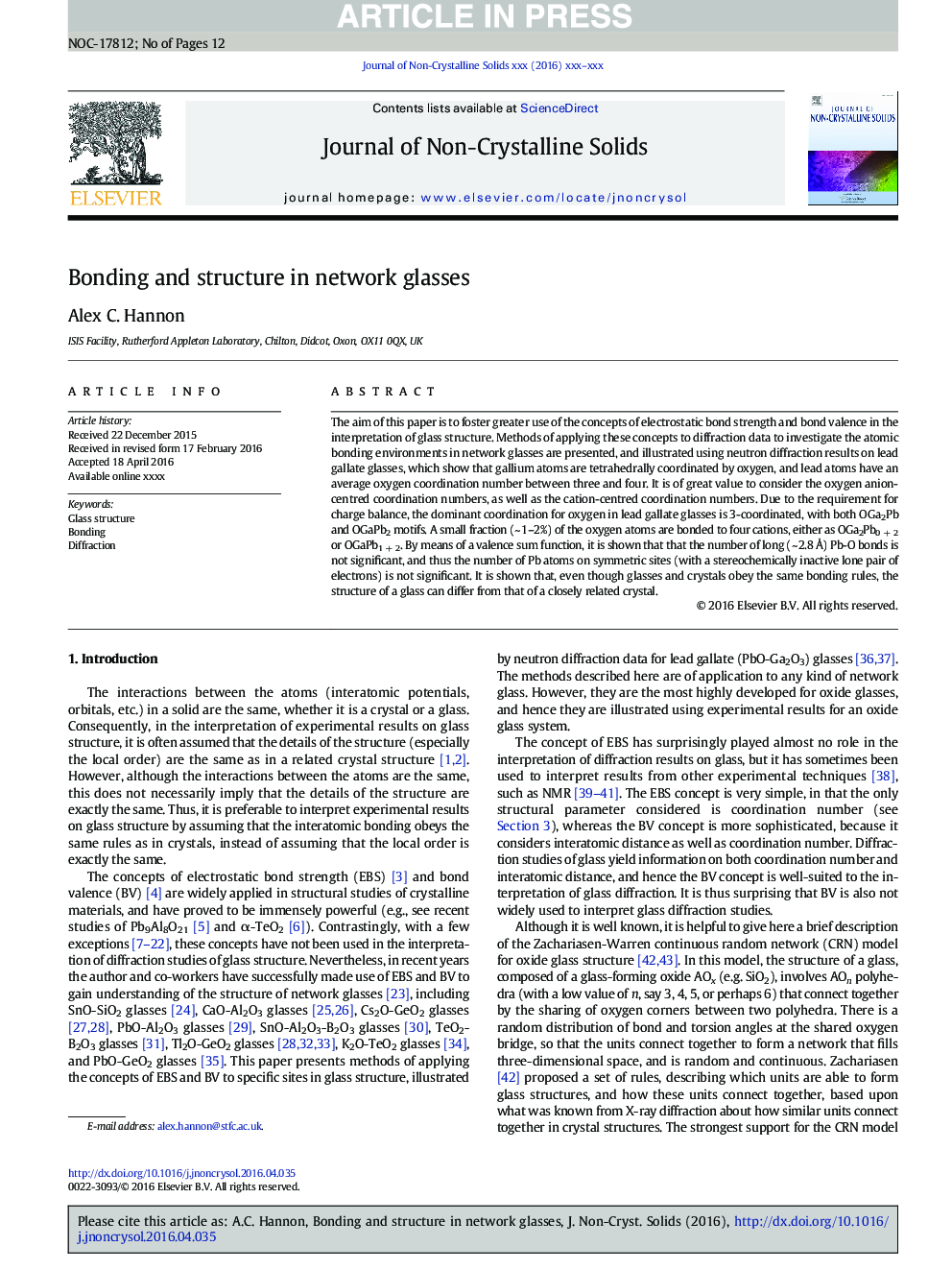| Article ID | Journal | Published Year | Pages | File Type |
|---|---|---|---|---|
| 5441461 | Journal of Non-Crystalline Solids | 2016 | 12 Pages |
Abstract
The aim of this paper is to foster greater use of the concepts of electrostatic bond strength and bond valence in the interpretation of glass structure. Methods of applying these concepts to diffraction data to investigate the atomic bonding environments in network glasses are presented, and illustrated using neutron diffraction results on lead gallate glasses, which show that gallium atoms are tetrahedrally coordinated by oxygen, and lead atoms have an average oxygen coordination number between three and four. It is of great value to consider the oxygen anion-centred coordination numbers, as well as the cation-centred coordination numbers. Due to the requirement for charge balance, the dominant coordination for oxygen in lead gallate glasses is 3-coordinated, with both OGa2Pb and OGaPb2 motifs. A small fraction (~Â 1-2%) of the oxygen atoms are bonded to four cations, either as OGa2Pb0Â +Â 2 or OGaPb1Â +Â 2. By means of a valence sum function, it is shown that that the number of long (~Â 2.8Â Ã
) Pb-O bonds is not significant, and thus the number of Pb atoms on symmetric sites (with a stereochemically inactive lone pair of electrons) is not significant. It is shown that, even though glasses and crystals obey the same bonding rules, the structure of a glass can differ from that of a closely related crystal.
Keywords
Related Topics
Physical Sciences and Engineering
Materials Science
Ceramics and Composites
Authors
Alex C. Hannon,
